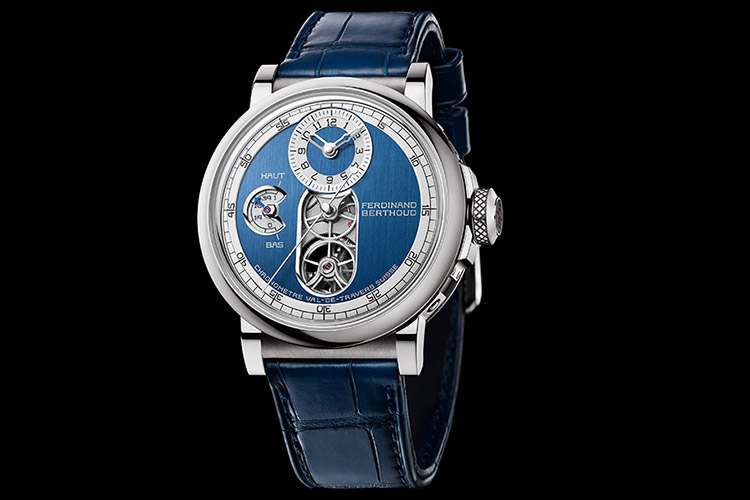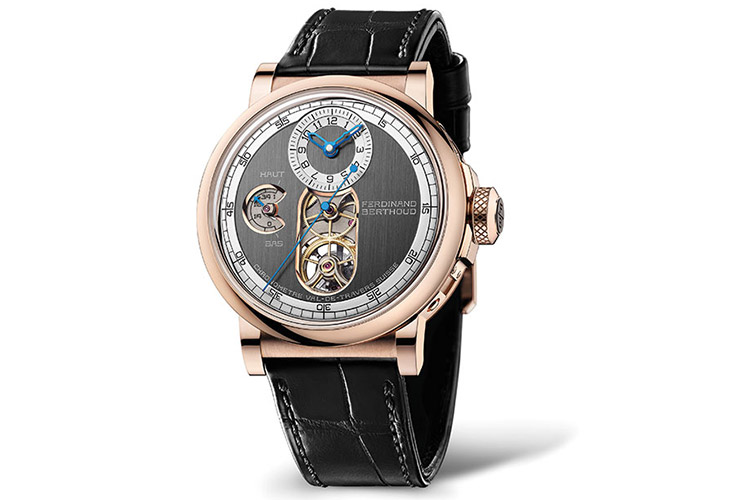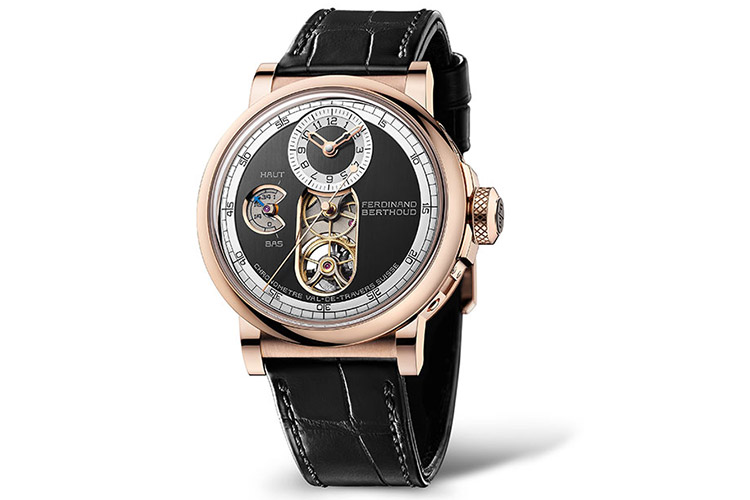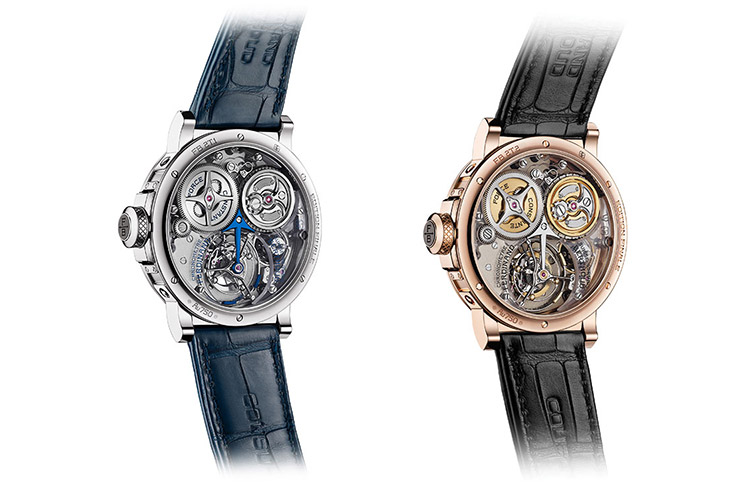
Even before the inauguration of the Manufacture, the President of Chronométrie Ferdinand Berthoud, Karl-Friedrich Scheufele, had a clear objective: to offer contemporary creations pursuing the work of Ferdinand Berthoud. This led to the 2015 presentation of the Chronomètre FB 1, a wristwatch such as the great Master Watchmaker might have conceived it today. Now the maison is back with the final limited edition of the Calibre FB-T.FC movement in a round case as the Chronomètre FB 2T
Chronomètre FB 2T
An octagonal case, a tourbillon movement with fusee-and-chain transmission and a pillar-based construction: the Chronomètre FB 1 is a Chronométrie Ferdinand Berthoud icon. Its Calibre FB-T.FC is now taking a last bow, in the form of a final 38-piece edition presented for the first time with a round case: the Chronomètre FB 2T. Equipped with a constant-force device known as fusee-and-chain transmission, Calibre FB-T.FC features a unique modus operandi, as winding is done by means of a differential placed in the centre of the fusee, which reduces the force required for winding. Seventy turns of the crown fully arm the mainspring, smoothly and without the slightest effort. Its 9 mm diameter makes the crown easy to grip. It is also equipped with a safety device to protect the movement from excessive winding.
With a mean daily rate of between -1 and +2 second(s) per day, the chronometric performance of Ferdinand Berthoud watches far surpasses the COSC standards. To achieve such precision, the driving force of Calibre FB-T.FC calibre consists of an inverted fusee and a barrel – both suspended and linked by a chain ensuring constant force throughout the entire 53-hour power reserve. Located at the top of the barrel, a Maltese Cross stopwork device mechanically limits the operating range of the mainspring where its torque is most constant. Although the barrel can potentially perform eight full revolutions itself, the Maltese Cross allows only six, marked by the six teeth on its profile.
During the entire 53-hour power reserve, this constant energy is delivered to the escapement, a tourbillon with central seconds, for which a patent has been filed. Positioned at 6 o’clock, the tourbillon carriage engages directly with the seconds (fourth) wheel thanks to a wheel located on its axis whose diameter and properties are identical to those of the seconds. The two wheels thus make a complete rotation in 60 seconds: the seconds (fourth) wheel in a clockwise direction and the tourbillon wheel counter-clockwise.
The power-reserve display is based on a patented process. Directly linked to the barrel by a large-diameter driving wheel, the mechanism uses the movement of arming and disarming the mainspring to move a cone up and down a threaded central arbor attached to the mainplate. A feeler tipped with a ruby roller end measures the upward and downward movement of the cone. When the movement is fully armed, the cone is at the top of the threaded arbor and the feeler arm therefore rests at the base of the cone (its widest diameter). As the movement is disarmed, the cone rotates and moves down the threaded arbor. The diameter of the cone at the feeler decreases and the feeler moves closer to the axis of the threaded arbor. The feeler arm rotates by about 15°, as does the rack below it, which is on the same axis. It is the latter that transmits the movement’s power-reserve level to the hand on the dial side.
Three versions will be offered by the Maison: FB 2T.2 in 18-carat rose gold with a black satin-brushed dial; FB 2T.2-1 in 18-carat rose gold with a ruthenium satin-brushed dial; and FB 2T.1 in 18-carat white gold with a blue satin-brushed dial. They can be customised by choice of case material, colour, dial finishing, and the leather strap.







